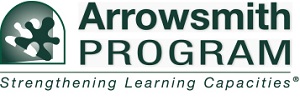Programme to rewire the brain introduced at Christchurch school

 The Canadian Arrowsmith Program designed to help those with learning difficulties has been introduced at Seven Oaks School in Opawa, Christchurch, with nine children and two adults starting the programme.
The Canadian Arrowsmith Program designed to help those with learning difficulties has been introduced at Seven Oaks School in Opawa, Christchurch, with nine children and two adults starting the programme.
The programme uses the principles of neuroplasticity to rewire the brain of children and adults with cognitive learning challenges. It was developed by Barbara Arrowsmith Young, who designed the cognitive exercises and founded the Arrowsmith Program more than 35 years ago, after successfully rectifying her own learning challenges.
Howard Eaton, a leading expert in education for students with learning difficulties, who recently visited New Zealand, says the brain responds to exercise, and specific brain exercises stimulate new cognitive pathways.
Originally a learning disability consultant, he was initially sceptical of the programme, but changed his mind when he saw a remarkable improvement in the learning capacity of some of his clients who had moved across Canada to undertake the programme. He went on to found six schools in British Colombia and the United States.
Seven Oaks School is the first South Island school to offer the programme, with four schools in the North Island and nearly 70 others throughout Canada and Australia already on board. Seven Oaks teacher Karen Arnst completed an intensive three-week training programme in Canada in January before returning to assess students and identify their unique challenges.
The programme has proven effective for students having difficulty with reading, writing and mathematics, comprehension, logical reasoning, problem solving, visual and auditory memory, non-verbal learning, attention, processing speed and dyslexia.
“People get entrenched in a mindset, that they or their children are saddled with their learning disability for life. Yet a similar kind of recovery we see in stroke patients with muscle recovery is also achievable for areas of the brain where cognitive function is blocked,” Mr Eaton says.
Responding to a query from a parent about how much recovery he sees in his students – just a little bit, or a lot, Mr Eaton said the children come out transformed, not only with the majority of learning disabilities quashed, but with their self-esteem high – provided they stay the distance.
Ms Arrowsmith Young says the programme works better for pupils who clearly exhibit learning difficulties in the 19 areas of challenge covered by the programme. Because each combination of cognitive challenge is unique, the results for atypical students such as those with a brain injury for example, can be variable.
“It’s about measuring the progress. If the programme is not working, then there’s no point continuing.”
Typically it takes up to three months before the first signs are observed. Recovery is a long, slow process to rewire neural pathways, which requires repetition, dedication and a little drudgery. The average length of time in the programme is three to four years and it costs the equivalent of a private school fee per annum.
“It’s worth it, if it works. It’s about connecting the dots for our child, for life, and this programme offers the closest fit for my child’s challenges,” a parent of a child in the Arrowsmith Program at Seven Oaks says.
“There’s no point trying to stuff the curriculum in when only half of it is sticking. My son is 11 but has a reading age of eight, and the gap will only widen. With the Arrowsmith Program he will gain skills that will help him be independent for life.”
Ms Arrowsmith Young says typically children after completing the programme (when they obtain mastery or score “average” in all areas of challenge) then take on new material at two to three times the rate they did before entering the programme, so they catch up quickly.
One parent of a child with sequencing issues at an Auckland school offering the Arrowsmith Program shared this story.
“The first time I noticed that the programme was working, was when I asked my son to put the kettle on for a cup of tea. Normally, I’d have to spell out each step in the sequence – fill the jug with water, plug it in, turn the kettle on…. But this time, when I asked him to put the kettle on, he came back carrying the cup of tea fully made, without any need for prompting! My jaw dropped.”
The programme is not limited to school-aged students. Classes typically include adults who achieve similar results.
Parents who would like to investigate the programme for their children or for themselves can find out more at the Seven Oaks Open Day on April 28. Determine your child’s suitability: www.brainex.net/protoQuest/User.html
Follow: Facebook Arrowsmith Program at Seven Oaks









